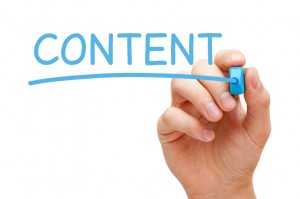In my last post, I explored the value of social media marketing in comparison with email marketing. There are certainly positives and negatives to both methods of reaching your leads, but the truth is that your view of them probably has a lot to do with what you marketing priorities are. If you’re solely focused on sales, sales, sales, then email is a faster way to get there. If you are interested in working to develop your brand – and the way people feel about and interact with it – then social media is a great place to do the job.
Sharing Content Well
Syndicating content is something that we all do to some extent on our own platforms, whether it’s sharing your blog posts on Facebook and LinkedIn, or tweeting your email offers to followers. In general, it’s a smart way to get more mileage out of your content marketing efforts. This is particularly helpful for small businesses that don’t have an in-house team to generate endless new content. You worked hard on producing valuable content, so by all means, share it!

But sometimes businesses go overboard when it comes to distributing all their marketing efforts across all their platforms. The trick to avoiding this oversaturation is a real understanding of how each channel works, who it reaches, and what those people are looking for from you. Your marketing channels will not do best with a one-size fits all approach – they want smart, tailor-made content.
Email: Good for Sales & Offers, Bad for High Volume
Let’s start with email, a very valuable tool for driving traffic and bringing both first-time buyers and repeat customers into your sales funnel. The great advantage of blasting a newsletter or special offer out to your mailing list is, essentially, the list itself. These are qualified leads, people who have either purchased from you before, or chosen to provide their email addresses to you. Don’t hold back – go for the salesy content! Pitch your products! They are interested – though whether they’re buying what you’re selling right now is another story, which depends a lot on your email marketing content.
To put it plainly, email is THE medium for distributing offers. Whether it’s a discount code, a BOGO promotion, a freebie or just a limited time clearance sale, many of the people on your mailing list are expecting to receive those types of offers, and (if they’re anything like me) it may be the only reason they’re still on your mailing list and haven’t clicked ‘unsubscribe.’ Voucher codes also work great on social media, but be sure you get them out to your mailing list as a first priority.
Related Class: The Power of Email Marketing: 8 Keys to Success
What email isn’t good for is heavy volume, which is where social media has the advantage. No one’s going to complain if you tweet every day, or even many times a day – but try that with email and see how thin your mailing list grows! Even if you think every one of your emails is witty, or funny, or informative, or packed full of discounts, sending too many of them will only lead to fewer and fewer recipients.
Social: Good for Personality & Frequency, Bad for Constant Self-Promotion
Social media is an effective and generally free way to get your brand out in front of consumers, so there is really no downside – as long as you’re posting the kind of content that users want to see. These channels create an opportunity for you to form the perception of your brand to a certain extent, whether it’s a fun and playful vibe with plenty of interaction (see Taco Bell), or a focused and informative style like Met Life. Whichever you settle on, what users don’t want is endless self-promotion – so mix it up or you’ll be quickly un-Liked.
Related Class: Content Marketing Strategy for Social Media
Because users on social media are likely seeing your post or tweet in between their friends’ and family members’ posts or tweets, you’re in a unique position to be a little more human. When done right, humanizing your brand this way will help users feel that they know and trust you – so you become more than your products or services to them. You should be posting not just about offers and sales but also about the behind the scenes stuff: announce new hires at the company, celebrate retirements, photograph office/store parties, or share new product development stages. Pull back the curtain so you can help influence how they see your brand.

Whereas email isn’t a good channel for sharing frequent content, social media is a great platform for it. Since Facebook isn’t even serving your posts to all your fans (those days are long gone, sigh), the likelihood of oversaturating any one person’s feed is pretty low. And on Twitter, the average user sees hundreds of tweets a day, so they’re unlikely to mind or even notice if you’re posting frequently throughout the day. I’d suggest scheduling your tweets ahead of time as much as possible; this will help you avoid posting all your tweets in rapid succession, particularly if you’re the type of busy marketer or business owner who only gets around to checking Twitter once a day. Most users of social media follow hundreds of other businesses and people, so you should worry more about how to stand out in the feed than about how often you appear in it.
Balance, Share, and Specialize
You wouldn’t email your entire mailing list to share a photo of your office dog, and you wouldn’t post super-salesy content to your Twitter or Facebook feed. Think hard about what you’re sharing where, and make sure you’re not just blanketing all channels with the same tone, offers and sales copy.
Use Twitter for your short, newsy-content; use Facebook or Instagram for your personal, behind the curtain posts; use email for your sell-sell-sell, offer-focused messaging. You can certainly cross over content between different channels – in fact, you probably should. But take a few minutes to adjust the tone, add a photo, or pump up the copy before you do. Combined, your various channels will complete a content delivery system that always shows you at your best.